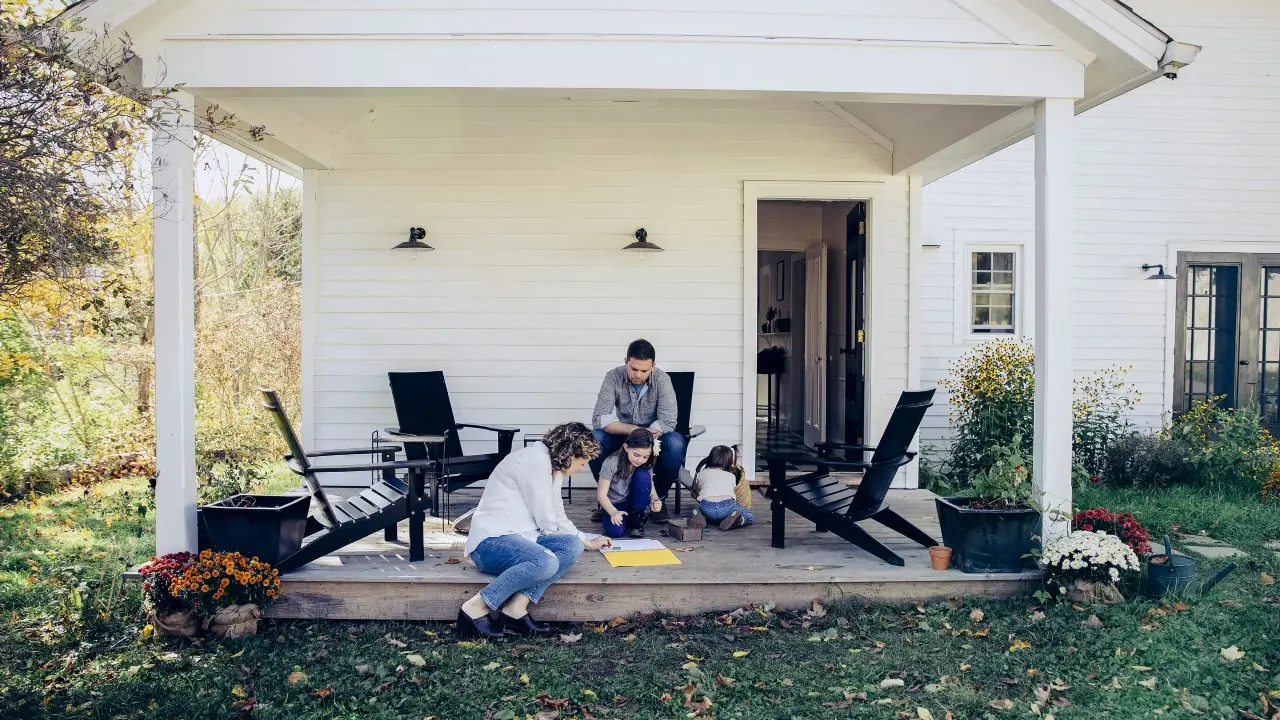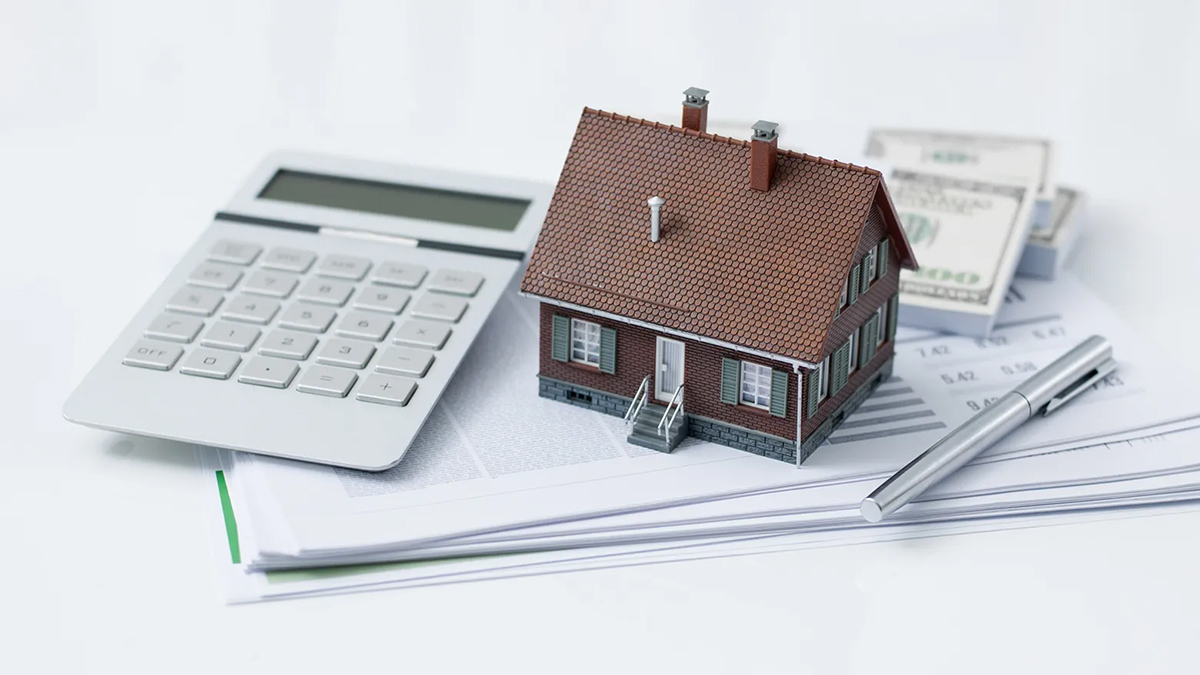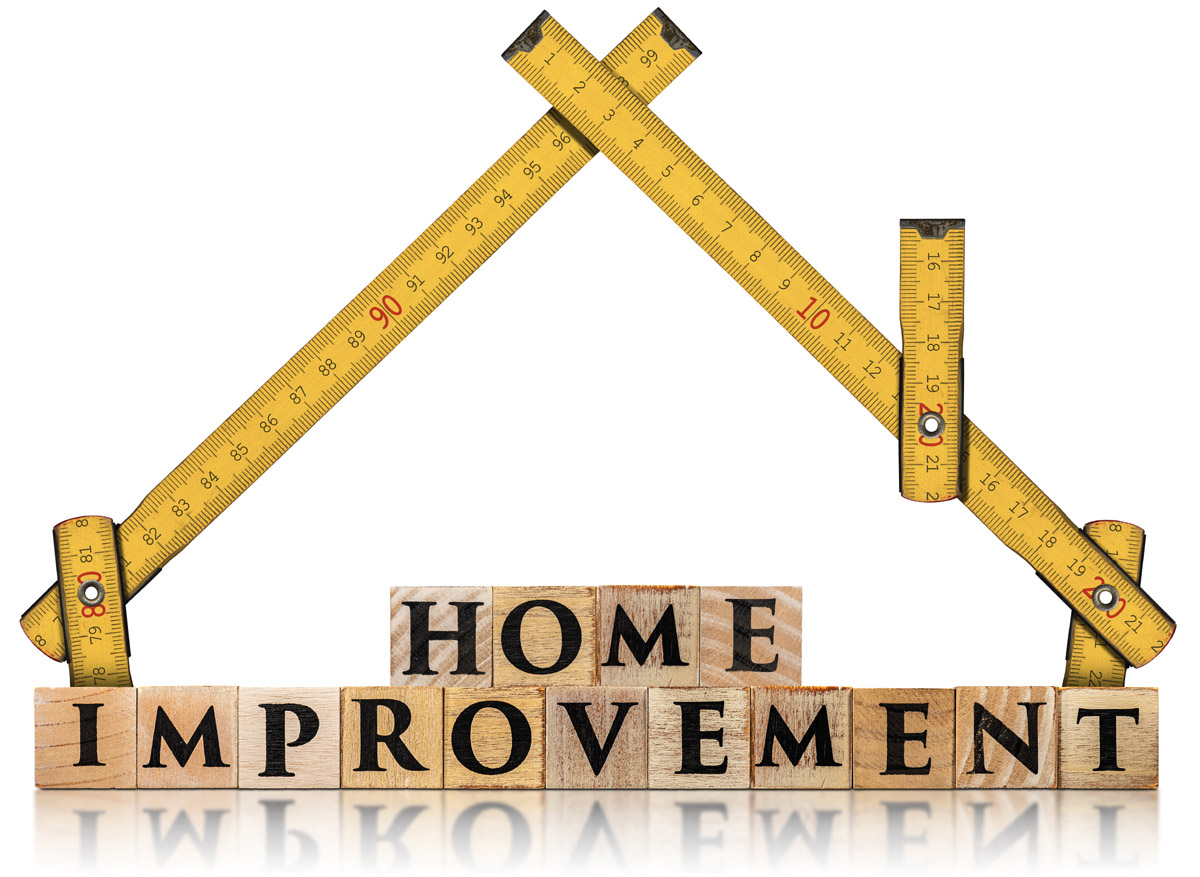Home>Home Maintenance>What Repairs Will A USDA Home Repair Loan Cover


Home Maintenance
What Repairs Will A USDA Home Repair Loan Cover
Modified: March 6, 2024
Discover what home repairs are covered by a USDA Home Repair Loan. From roofing to plumbing, get financial assistance for your home maintenance needs.
(Many of the links in this article redirect to a specific reviewed product. Your purchase of these products through affiliate links helps to generate commission for Storables.com, at no extra cost. Learn more)
Overview of USDA Home Repair Loans
If you’re a homeowner in rural areas and need financial assistance for home repairs, the USDA Home Repair Loan program could be the solution you’re looking for. This program, offered through the United States Department of Agriculture (USDA), aims to help low-income homeowners in eligible rural communities improve the safety and livability of their homes.
USDA Home Repair Loans provide affordable financing options to homeowners who may not have access to traditional loans or insurance coverage for repairs. These loans offer low interest rates and flexible repayment terms, making it easier for homeowners to make necessary repairs and improvements to their properties.
These loans are specifically designed to assist homeowners whose household income falls below 50% of the area median income. This ensures that those who have limited financial resources can still access funds to maintain and repair their homes.
One of the major benefits of USDA Home Repair Loans is that they have no maximum loan limit. This means that homeowners can apply for the amount they need based on the estimated cost of the repairs or improvements. However, the loan amount is subject to the borrower’s ability to repay and the appraised value of the property.
Another advantage of USDA Home Repair Loans is that they can be used for a wide range of repairs and improvements. This includes repairing structural issues, addressing health and safety hazards, installing or repairing essential utilities, and making accessibility modifications for individuals with disabilities.
It’s important to note that these loans are only available to homeowners in designated rural areas. The USDA uses specific criteria to determine the eligibility of a property, including its location and population. To find out if your home is eligible, you can use the USDA’s online mapping tool or contact your local USDA office for more information.
To apply for a USDA Home Repair Loan, homeowners must meet certain requirements. These include being the owner and occupant of the property, having a satisfactory credit history, and demonstrating the ability to repay the loan. Additionally, homeowners must have a repayment capacity that is adequate to cover both the mortgage and the proposed loan.
Overall, USDA Home Repair Loans offer a valuable opportunity for low-income homeowners in rural areas to make necessary repairs and improvements to their homes. By providing affordable financing options and addressing health and safety concerns, these loans help to enhance the quality of life for homeowners and their families.
Key Takeaways:
- USDA Home Repair Loans provide affordable financing for rural homeowners to make critical repairs and improvements, enhancing safety and livability.
- Eligible repairs include structural, health, and accessibility improvements, but not cosmetic or luxury upgrades. Homeowners should work with approved contractors and prioritize energy efficiency.
Read more: What Is A USDA Construction Loan
Eligibility Requirements for USDA Home Repair Loans
USDA Home Repair Loans provide a lifeline for homeowners in rural areas who are in need of financial assistance for home repairs. To qualify for these loans, homeowners must meet certain eligibility requirements set by the United States Department of Agriculture (USDA).
Here are the key eligibility criteria for USDA Home Repair Loans:
- Income Requirements: Applicants must have a household income that is below 50% of the area median income (AMI) for their specific location. The USDA determines income eligibility based on the size of the household and the county in which the property is located.
- Property Ownership: Only homeowners are eligible for USDA Home Repair Loans. The applicant must be the owner of the property that requires repairs or improvements. Rental properties and investment properties are not eligible.
- Occupancy Requirement: The applicant must occupy the property as their primary residence. This means that the property cannot be a vacation home or a secondary residence.
- Credit History: To qualify for a USDA Home Repair Loan, applicants must have a satisfactory credit history. While a perfect credit score is not required, a history of responsible financial behavior is important.
- Repayment Capacity: Homeowners must demonstrate the ability to repay the loan. This involves showing a stable income and having a repayment capacity that is sufficient to cover both the mortgage and the proposed loan.
It’s important to note that eligibility requirements may vary slightly depending on the specific USDA Home Repair Loan program in your area. To ensure that you meet all the necessary criteria, it’s recommended to contact your local USDA office or visit their website for the most up-to-date information.
If you meet the eligibility requirements for a USDA Home Repair Loan, you can proceed with the application process. This typically involves submitting an application form, providing documentation to verify your income and ownership of the property, and undergoing a credit check.
By meeting the eligibility requirements, homeowners in rural areas can access the financial assistance they need to make essential repairs and improvements to their homes. USDA Home Repair Loans offer a valuable opportunity to enhance the safety, functionality, and livability of properties in eligible communities.
The Application Process for USDA Home Repair Loans
Applying for a USDA Home Repair Loan can provide homeowners in rural areas with the financial support they need to make critical repairs and improvements. The application process for these loans involves several steps, ensuring that applicants meet the eligibility requirements and provide the necessary documentation to support their request.
Here is an overview of the application process for USDA Home Repair Loans:
- Research and Gather Information: Before applying, homeowners should research the USDA Home Repair Loan program to understand its requirements and benefits. They should also gather all necessary information and documentation, such as income verification, property ownership documents, and credit history.
- Contact Your Local USDA Office: Reach out to your local USDA office to start the application process. They can provide you with the necessary application forms and guide you through the process. You can find the contact information for your local office on the USDA”s website.
- Complete the Application: Fill out the application form accurately and completely. Be sure to provide all the required information, including personal details, income information, property details, and the repair or improvement project you need the loan for.
- Submit Supporting Documents: Along with the application form, you will need to submit supporting documents to verify your eligibility. This may include income documentation, such as pay stubs or tax returns, proof of property ownership, and any other documents requested by the USDA.
- Undergo a Credit Check: The USDA will conduct a credit check as part of the application process to assess your creditworthiness and repayment capacity. A good credit history and score can increase your chances of approval.
- Loan Processing and Approval: Once your application and supporting documents are submitted, they will be reviewed by the USDA. If your application is approved, you will receive a loan commitment letter outlining the terms of the loan.
- Close the Loan: After receiving the loan commitment letter, you will need to sign the necessary loan documents and complete the closing process. This typically involves working with a loan officer or attorney to finalize the loan agreement.
- Receive Loan Funds: Once the loan is closed, you will receive the funds in a lump sum or in installments, depending on the terms of the loan. You can then use the funds to make the approved repairs or improvements to your home.
It’s important to note that the application process and timelines may vary depending on the specific USDA Home Repair Loan program in your area. To ensure a smooth application process, it’s recommended to communicate closely with your local USDA office and provide any additional documentation or information requested.
By following these steps and completing the application process, homeowners can access the financial assistance they need to make necessary repairs and improvements to their homes. USDA Home Repair Loans provide an accessible and affordable solution for homeowners in rural areas, helping to enhance the safety, functionality, and value of their properties.
Funding and Loan Limits for USDA Home Repair Loans
USDA Home Repair Loans provide homeowners in rural areas with the financial support they need to make essential repairs and improvements to their properties. Understanding the funding options and loan limits associated with these loans is crucial when considering this type of assistance.
One of the significant advantages of USDA Home Repair Loans is that there is no maximum loan limit set by the United States Department of Agriculture (USDA). This means that homeowners can apply for the amount they need based on the estimated cost of the repairs or improvements, up to the appraised value of the property.
However, while there is no specific maximum loan amount, the USDA will assess your ability to repay the loan. They scrutinize your income, expenses, and credit history to make sure you have a repayment capacity that makes sense for the proposed loan amount.
The USDA Home Repair Loan program operates on a first-come, first-served basis, subject to the availability of funds. The exact funding available varies from year to year, depending on the annual allocation from the USDA. Therefore, it’s essential to keep track of any announcements or updates from the USDA regarding funding availability.
In addition to the loan amount, it’s important to consider the interest rate and repayment terms associated with USDA Home Repair Loans. These loans typically have low interest rates, making them an affordable option for eligible homeowners. The exact interest rate will be determined based on factors such as your creditworthiness and current market conditions.
Repayment terms for USDA Home Repair Loans can vary but generally range from 20 to 30 years. The length of the loan term depends on the amount borrowed, the borrower’s financial situation, and the proposed repairs or improvements. Longer loan terms can result in lower monthly payments but may lead to paying more interest over the life of the loan.
It’s important to note that USDA Home Repair Loans are intended to assist homeowners with necessary repairs and improvements rather than cosmetic or luxury upgrades. The funds must be used for eligible repairs that address health and safety concerns, structural issues, accessibility modifications, or the installation/repair of essential utilities.
By understanding the funding options and loan limits associated with USDA Home Repair Loans, homeowners can make informed decisions about their home improvement projects. It’s recommended to work closely with the USDA and their approved lenders to determine the loan amount and repayment plan that best fit your needs and financial circumstances.
Remember to consider your long-term financial goals and budget constraints when determining the loan amount and repayment terms. By doing so, you can leverage USDA Home Repair Loans to improve the safety, functionality, and value of your home while maintaining financial stability.
Types of Repairs Covered by USDA Home Repair Loans
USDA Home Repair Loans offer homeowners in rural areas an opportunity to address critical repairs and improvements to their properties. These loans cover a wide range of repairs that are necessary for maintaining the safety, functionality, and livability of homes. Understanding the types of repairs covered by USDA Home Repair Loans can help homeowners determine if this financial assistance is suitable for their needs.
Here are some of the common types of repairs covered by USDA Home Repair Loans:
- Structural Repairs: USDA Home Repair Loans can be used to address structural issues with the home, such as foundational problems, roof repairs, and repairs to walls or floors. These repairs are crucial for maintaining the integrity and stability of the property.
- Health and Safety Repairs: This loan program covers repairs that are necessary to ensure the health and safety of the occupants. This includes fixing electrical and plumbing issues, repairing or replacing faulty heating or cooling systems, and addressing mold or water damage.
- Accessibility Modifications: USDA Home Repair Loans can be used to make modifications to the home that improve accessibility for individuals with disabilities or limited mobility. This may involve installing ramps, widening doorways, or making modifications to bathrooms or kitchens to accommodate wheelchair access.
- Energy Efficiency Improvements: Homeowners can use these loans to make energy-efficient improvements to their properties, such as installing insulation, upgrading windows and doors, or replacing old appliances with energy-efficient models. These improvements not only reduce energy consumption but also lower utility costs.
- Well and Septic System Repairs: For homeowners who rely on well and septic systems, USDA Home Repair Loans can cover the repair or replacement of these systems. Ensuring the proper functioning of these essential utilities is crucial for a safe and healthy living environment.
- Weatherization Upgrades: Homeowners can use the loan funds to weatherize their homes, making them more energy-efficient and better equipped to withstand harsh weather conditions. This may involve adding weatherstripping, sealing air leaks, or upgrading insulation.
It’s important to note that USDA Home Repair Loans are not intended for cosmetic or luxury upgrades. The focus is on repairs and improvements that are necessary for the health, safety, and functionality of the home.
Prior to applying for a USDA Home Repair Loan, homeowners should carefully assess their repair needs and estimate the costs associated with the repairs. By clearly documenting and articulating the specific repairs to be covered by the loan, homeowners can streamline the application and approval process.
Working closely with a qualified contractor or home inspector can help homeowners identify the repairs that are eligible for USDA Home Repair Loans. Their expertise can ensure that homeowners make informed decisions and prioritize the repairs that are most critical for their homes.
By understanding the types of repairs covered by USDA Home Repair Loans, homeowners can access the financial assistance they need to address necessary repairs and improvements. This loan program offers an accessible and affordable solution to help homeowners in rural areas maintain safe, functional, and comfortable homes.
A USDA home repair loan can cover essential repairs such as roofing, flooring, heating and cooling systems, insulation, and accessibility modifications.
Read more: How To Apply For A USDA Construction Loan
Examples of Common Repairs Covered by USDA Home Repair Loans
USDA Home Repair Loans provide homeowners in rural areas with the financial support needed to address critical repairs and improvements to their properties. These loans cover a wide range of repairs that are necessary for maintaining the safety and livability of homes. Here are some common examples of repairs covered by USDA Home Repair Loans:
- Roof Repairs: USDA Home Repair Loans can be used to repair or replace a damaged roof. This includes fixing leaks, replacing missing shingles, or repairing structural issues related to the roof. A well-maintained roof is essential for protecting the home from water damage and maintaining its overall integrity.
- Plumbing Repairs: Homeowners can use USDA Home Repair Loans to address plumbing issues such as broken pipes, leaks, or faulty fixtures. These repairs are crucial for ensuring proper water supply, drainage, and preventing further damage to the home.
- Electrical System Repairs: This loan program covers repairs to the electrical system, including fixing faulty wiring, replacing outdated electrical panels, or addressing safety hazards. Properly functioning electrical systems are vital for the safety and functionality of a home.
- Heating and Cooling System Repairs: Homeowners can use USDA Home Repair Loans to repair or replace malfunctioning heating and cooling systems. This includes fixing or replacing furnaces, heat pumps, air conditioning units, or addressing ventilation issues. A well-maintained HVAC system ensures a comfortable and healthy living environment.
- Structural Repairs: USDA Home Repair Loans cover repairs to the structure of the home, such as foundation repairs, fixing sagging floors, or addressing structural damage. These repairs are crucial for maintaining the stability and integrity of the property.
- Accessibility Modifications: USDA Home Repair Loans can be used to make modifications that improve accessibility for individuals with disabilities or limited mobility. This may include installing ramps, handrails, or making bathroom modifications to accommodate wheelchair access.
- Well and Septic System Repairs: For homeowners with well and septic systems, this loan program covers repairs or replacements of these systems. Ensuring the proper functioning of these essential utilities is crucial for a safe and healthy living environment.
- Mold Remediation: USDA Home Repair Loans can be used to address mold issues in the home. This includes identifying the source of the mold, removing affected materials, and implementing measures to prevent future mold growth. Mold remediation is essential for maintaining indoor air quality and preventing health issues.
- Weatherization Upgrades: Homeowners can use USDA Home Repair Loans to weatherize their homes, making them more energy-efficient. This may include adding insulation, sealing air leaks, or upgrading windows and doors to improve energy efficiency and reduce utility costs.
These are just a few examples of the repairs covered by USDA Home Repair Loans. It’s important to note that eligibility and loan limits may vary depending on the specific program guidelines in your area. Consulting with a local USDA office or approved contractor can help homeowners determine if their specific repair needs qualify for this type of financial assistance.
By accessing USDA Home Repair Loans, homeowners can address necessary repairs and improvements, ensuring the safety, functionality, and value of their homes. Repairing these issues not only enhances the quality of life for homeowners but also contributes to the overall well-being of rural communities.
Repairs NOT Covered by USDA Home Repair Loans
While USDA Home Repair Loans offer homeowners in rural areas the opportunity to address critical repairs and improvements, it’s important to understand that not all types of repairs are covered under this loan program. It’s essential to be aware of the limitations and exclusions to avoid any misunderstandings or financial surprises. Here are some examples of repairs that are typically not covered by USDA Home Repair Loans:
- Cosmetic Upgrades: USDA Home Repair Loans are intended for repairs and improvements that are necessary for maintaining the safety and functionality of a home. Cosmetic upgrades, such as painting, flooring replacements for aesthetic reasons, or adding non-essential features, are not covered by these loans.
- Luxury Upgrades: Similarly, luxury upgrades, such as a swimming pool installation, landscaping enhancements purely for aesthetic purposes, or high-end kitchen remodeling, are not eligible expenses under USDA Home Repair Loans.
- Non-Essential Improvements: Improvements that are not essential for the health, safety, and livability of the home are generally not covered. This includes additions or expansions that are strictly for additional space rather than addressing critical needs.
- Non-Permanent Repairs: Repairs that are temporary or have a short-term effect are typically not covered. The repairs funded by USDA Home Repair Loans should be of a lasting nature and contribute to the long-term safety and stability of the home.
- Commercial Use: USDA Home Repair Loans are specific to homeowners and their primary residences. Repairs for properties used for commercial purposes, rental properties, or secondary residences are generally not eligible for this loan program.
- General Maintenance: Routine maintenance tasks, such as regular cleaning, minor touch-ups, or replacing worn-out items due to regular wear and tear, are not typically covered. The focus of this loan program is on repairs and improvements that go beyond typical maintenance responsibilities.
- Code Violations: While USDA Home Repair Loans cover necessary repairs, they do not cover repairs required to bring a property up to code compliance for new construction or major renovations. These types of repairs may require different funding sources or programs.
- Exterior Structures: Repairs to detached structures on the property, such as sheds, garages, or fences, are generally not eligible for USDA Home Repair Loans. The funding is primarily focused on repairs to the main residential structure.
- Unapproved Contractors: Repairs done by unapproved or unauthorized contractors are not covered. It’s important to work with contractor(s) approved by the USDA to ensure the eligibility of the repairs and the proper utilization of the loan funds.
It’s crucial to carefully review the guidelines and eligibility criteria provided by the USDA for the Home Repair Loan program. Familiarize yourself with the specific restrictions and limitations to ensure that the repairs you require are covered before applying for the loan.
If you have questions about whether a specific repair or improvement is eligible, it’s advisable to consult with your local USDA office or an approved contractor who can provide guidance based on their expertise and knowledge of the program.
Understanding what repairs are not covered by USDA Home Repair Loans helps homeowners set realistic expectations and seek alternative funding sources if needed. By making informed decisions and working within the loan program’s guidelines, homeowners can successfully address critical repairs while maintaining financial stability.
How to Find Approved Contractors for USDA Home Repair Loans
When utilizing USDA Home Repair Loans for repairs and improvements on your rural property, it’s important to work with contractors who are approved and qualified by the United States Department of Agriculture (USDA). Approved contractors have the necessary experience and knowledge to complete the repairs in compliance with program requirements. Here are some ways you can find approved contractors for USDA Home Repair Loans:
- Check USDA Resources: Start by visiting the USDA’s official website or contacting your local USDA office for a list of approved contractors in your area. They will have up-to-date information on contractors who have met the USDA’s qualification standards.
- Ask for Recommendations: Reach out to friends, family, neighbors, or local community organizations who have utilized USDA Home Repair Loans before. They may be able to recommend contractors they have worked with and had a positive experience. Personal recommendations can provide valuable insights into the quality of work and professionalism of the contractors.
- Contact Local Building Associations: Local building associations or trade organizations often maintain a directory of contractors in the area. Reach out to these associations and inquire about contractors who are approved or familiar with working on projects funded by USDA Home Repair Loans.
- Research Online: Use online platforms like contractor directories, review websites, or local business listings to search for contractors in your area. Look for contractors who specifically mention their approval or experience with USDA Home Repair Loan projects. Read reviews and ratings to gauge their reputation and the quality of their work.
- Attend Home Improvement Shows or Events: Local home improvement shows or events often feature contractors showcasing their services. These events can provide an opportunity to meet contractors in person, ask specific questions about their experience with USDA Home Repair Loans, and gather their contact information.
- Get Multiple Bids: Once you have identified potential contractors, request bids or estimates for your repair project. Evaluate the bids, considering factors such as cost, timeline, and the contractor’s expertise. Compare the proposals to ensure they align with your needs and fall within the scope of the USDA Home Repair Loan program.
- Verify Credentials: Before finalizing a contractor, conduct thorough background checks. Verify their credentials, licenses, insurance coverage, and accreditation with relevant professional bodies. Request references and follow up with previous clients to inquire about their experiences working with the contractor.
- Communicate with USDA: Throughout the process, stay in contact with your local USDA office. They can provide guidance and ensure that your chosen contractor is approved and meets the necessary qualifications. Keep the USDA informed about your contractor selection and any changes made during the repair project.
It’s crucial to work with an approved contractor to ensure compliance with the USDA Home Repair Loan program requirements and to have confidence in the quality and reliability of the repairs or improvements. By following these steps and conducting thorough research, you can find a contractor who is experienced, reputable, and well-suited for your specific project.
Remember to maintain open and transparent communication with the contractor throughout the repair process. This will help ensure that the repairs are completed to your satisfaction and in accordance with the USDA guidelines.
By carefully selecting an approved contractor for your USDA Home Repair Loan project, you can have peace of mind knowing that the repairs will be performed by qualified professionals who understand the specific requirements of the loan program.
Tips for Maximizing the Benefits of USDA Home Repair Loans
USDA Home Repair Loans offer valuable financial assistance to homeowners in rural areas, enabling them to make critical repairs and improvements to their properties. To make the most of these loans and maximize their benefits, consider the following tips:
- Thoroughly Assess Repair Needs: Before applying for a USDA Home Repair Loan, conduct a comprehensive assessment of the repairs and improvements needed in your home. Prioritize repairs that are essential for safety, functionality, and livability. This will help you determine the loan amount required and ensure that the funds are allocated to the most critical repairs.
- Develop a Detailed Repair Plan: Once you’ve identified the necessary repairs, develop a detailed repair plan. Clearly outline the specific repairs, estimated costs, and proposed timeline for completion. This will help you stay organized, communicate effectively with contractors, and ensure that the loan funds are used efficiently.
- Seek Multiple Bids: When selecting a contractor, obtain multiple bids for your repair project. This allows you to compare prices, assess the quality of work, and select a contractor who offers the best value for your money. Keep in mind that the lowest bid may not always be the best choice; consider the contractor’s qualifications, experience, and reputation.
- Adhere to Program Guidelines: Familiarize yourself with the guidelines and requirements of the USDA Home Repair Loan program. Ensure that the repairs and improvements you plan to make are eligible under the program. Work closely with the USDA and approved contractors to ensure compliance with program guidelines throughout the repair process.
- Select Qualified and Approved Contractors: Choose contractors who are approved by the USDA and have experience with USDA Home Repair Loan projects. Approved contractors have expertise in complying with program requirements and can help streamline the repair process. Verify their credentials, obtain references, and ask for examples of previous work to ensure their qualifications and professionalism.
- Properly Maintain Your Home: After completing the repairs, prioritize regular maintenance to prevent further deterioration or the need for additional repairs. Implement a maintenance schedule for tasks such as cleaning gutters, inspecting for water leaks, and servicing HVAC systems. Keeping up with maintenance can help preserve the improvements made and extend the lifespan of your home.
- Track Expenses and Maintain Documentation: Keep detailed records of all expenses related to the repairs and improvements. This includes invoices, receipts, and any other relevant documentation. Maintaining clear documentation ensures transparency and helps during the loan repayment process. It also serves as a reference for any future maintenance or insurance claims.
- Stay in Communication with the USDA: Maintain open and regular communication with your local USDA office throughout the repair process. Keep them informed of any changes or updates, and seek their guidance if needed. They can provide assistance, answer questions, and ensure that you are on track with the loan program requirements.
- Consider Energy Efficiency: While making repairs, prioritize energy-efficient upgrades. This can help reduce energy costs and improve the overall efficiency of your home. Examples include adding insulation, upgrading windows and doors, or installing energy-efficient appliances. These upgrades can lead to long-term savings on utility bills.
- Take Advantage of Education and Resources: The USDA provides educational resources to help homeowners make informed decisions about repairs and improvements. Take advantage of these resources to learn more about home maintenance, energy efficiency, and other relevant topics. The more informed you are, the better equipped you will be to maximize the benefits of the USDA Home Repair Loan program.
By following these tips, homeowners can make the most of USDA Home Repair Loans. These loans offer an opportunity to address critical repairs and improve the safety, functionality, and value of rural properties. Maximizing the benefits of these loans ensures that the repairs are completed efficiently, cost-effectively, and in compliance with program requirements.
Remember, it’s essential to work closely with the USDA and approved contractors throughout the process to ensure a smooth and successful repair project. By leveraging the benefits of USDA Home Repair Loans, homeowners can create a safe, comfortable, and well-maintained living environment for themselves and their families.
Conclusion
USDA Home Repair Loans are a valuable tool for homeowners in rural areas to address critical repairs and improvements in their properties. These loans provide affordable financing options and enable homeowners to enhance the safety, functionality, and livability of their homes. By understanding the eligibility requirements, application process, types of repairs covered, and tips for maximizing the benefits, homeowners can make informed decisions and successfully navigate the USDA Home Repair Loan program.
Through the USDA Home Repair Loan program, low-income homeowners in eligible rural communities can access the financial assistance they need to make necessary repairs. From structural repairs and health and safety improvements to accessibility modifications and energy-efficiency upgrades, these loans cover a wide range of repair options. It’s important for homeowners to assess their repair needs, develop a detailed plan, and work with approved contractors to ensure compliance with program guidelines.
To benefit fully from USDA Home Repair Loans, homeowners must adhere to program requirements, stay in communication with the USDA, and maintain proper documentation of expenses. They should also prioritize regular maintenance to protect the repairs made and ensure the long-term durability of their homes. By taking advantage of educational resources provided by the USDA and considering energy-efficient upgrades, homeowners can maximize the sustainability and cost-savings of their repaired properties.
In conclusion, USDA Home Repair Loans offer a lifeline for rural homeowners to address critical repairs and improvements. These loans provide financial support, maintain the safety and functionality of homes, and contribute to the overall well-being of rural communities. By utilizing this program effectively and engaging with approved contractors, homeowners can transform their homes, enhancing their quality of life and creating a safe and comfortable environment for themselves and their families.
Frequently Asked Questions about What Repairs Will A USDA Home Repair Loan Cover
Was this page helpful?
At Storables.com, we guarantee accurate and reliable information. Our content, validated by Expert Board Contributors, is crafted following stringent Editorial Policies. We're committed to providing you with well-researched, expert-backed insights for all your informational needs.













